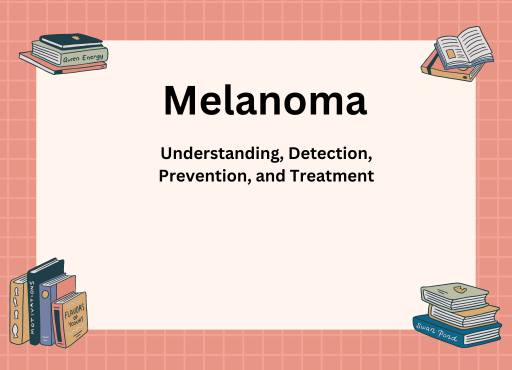Melanoma: A Comprehensive Guide to Understanding, Detection, and Prevention
Melanoma, a cunning adversary lurking beneath the surface of our skin, is the most aggressive form of skin cancer. Despite its sinister reputation, knowledge empowers us to confront this challenge. This essay delves into the multifaceted world of melanoma, equipping you with the information necessary to safeguard yourself and your loved ones.
Unveiling the Shadow: Understanding Melanoma’s Biology
Our journey begins with an understanding of how a healthy cell becomes malignant. Melanoma’s origins can be traced back to melanocytes, which produce pigment in the skin. Mutations in these cells, frequently caused by ultraviolet (UV) exposure from the sun or tanning beds, might disturb their regular growth patterns. These altered cells reproduce uncontrollably, generating malignant tumors that can penetrate deeper tissues and potentially spread throughout the body.
Melanoma manifests in various forms, each with its own distinct characteristics. The most common type, superficial spreading melanoma, appears as an irregularly shaped mole with uneven borders and color variations (brown, black, tan, or even red, white, or blue). Acral lentiginous melanoma, prevalent on palms, soles, and nail beds, often presents as a dark brown or black patch with irregular borders. Less common subtypes include nodular melanoma, appearing as a rapidly growing bump, and desmoplastic melanoma, a firm, pale tumor.
Early Detection: The Crucial First Step
Early detection is critical in the fight against melanoma. The ABCDE method is an effective tool for self-examination.
Asymmetry means that one half of the mole is not equal to the other.
The boundaries are irregular, notched, or smeared.
The mole’s pigmentation (color) is uneven, with shades of brown, black, tan, red, white, and blue.
The mole diameter is bigger than 6 millimeters (about the size of a pencil eraser).
The mole evolves over time, changing size, shape, and color.
Regular skin screenings by a dermatologist are equally crucial. A dermatologist can utilize dermoscopy, a non-invasive technique employing a magnified lighting device, to examine moles in greater detail. If a suspicious mole is identified, a biopsy, where a small tissue sample is extracted and examined under a microscope, becomes the next step to confirm a melanoma diagnosis.
Navigating the Diagnostic Maze: Staging Melanoma
Once melanoma has been verified, the next step is to determine the cancer’s stage. Staging refers to the amount to which the cancer has spread. Melanoma in Stage 0 is limited to the top layer of the skin (epidermis) and has the highest cure rate. As the cancer grows, it penetrates deeper layers of the skin and may spread to lymph nodes and other organs. Understanding the stage is essential for selecting the best course of treatment.
The Arsenal Against Melanoma: Treatment Options and Prognosis
The primary therapy for melanoma is surgical excision, in which the diseased tumor is completely removed and a margin of healthy tissue is left around it. The extent of the operation depends on the stage of the cancer. A sentinel lymph node biopsy may be performed, in which the first lymph nodes to which the cancer may have spread are removed and examined. Advanced stages of melanoma sometimes require additional treatment techniques.
Immunotherapy utilizes the body’s own immune system to fight cancer cells. These treatments, such as checkpoint inhibitors, can be very effective in some cases. Targeted therapies use specific mutations in the cancer cells to prevent their growth and survival. Radiotherapy, which uses high-energy x-rays to destroy cancer cells, can be used in certain situations.
The prognosis for melanoma patients depends on various factors, including the stage of the cancer at diagnosis, the patient’s overall health, and their response to treatment. Early-stage melanomas, detected and treated promptly, have very high cure rates. However, the prognosis worsens with advancing stages. Nevertheless, significant advancements in treatment options offer a hopeful outlook for many patients.
Living Beyond the Diagnosis: The Emotional Landscape
Melanoma diagnosis can be a life-altering event that causes anxiety, dread, and uncertainty. It is critical to recognize these feelings and seek help. Support groups connect patients with individuals who understand the difficulties they are facing. Furthermore, mental health professionals can help you cope with the emotional effects of the condition.

[…] Melanoma: A Comprehensive Guide to Understanding, Detection, Prevention, and Treatment Ninja, Skin Cancer, and the Power of Early Detection Sky Palaces and Infinity Pools: Ultra-Luxury Living in Dubai The Tragic Collapse of Baltimore’s Francis Scott Key Bridge Lakers’ Victory over the Pacers in the Context of March Madness […]